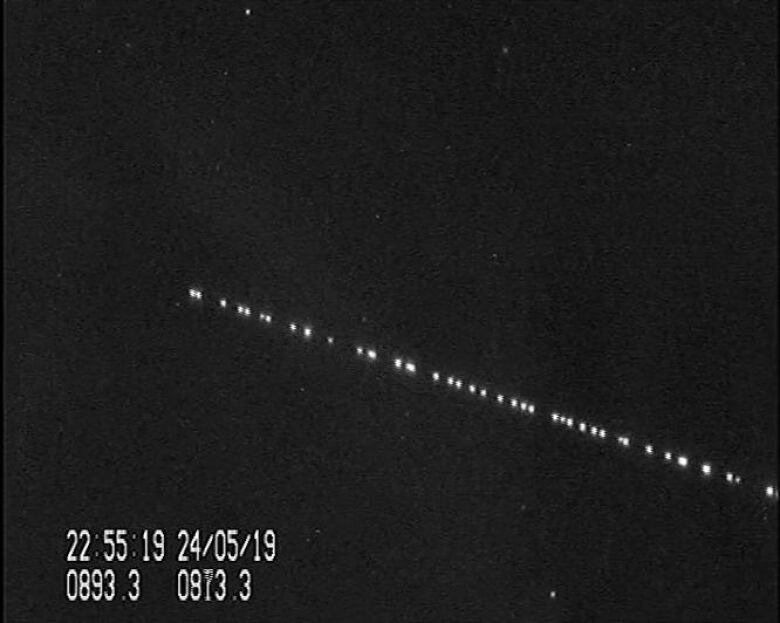The wrong kind of 'constellations' are threatening astronomical observations
Fleets of mini communication satellites can appear as bight streaks of light in telescope images


A NASA astronomer is asking members of the public citizen to help document the light pollution created in the early evening and pre-morning sky by new 'constellations' of mini communications satellites.
Many thousands of these satellites are planned for launch by a handful of companies, and astronomers are concerned that this will severely limit the kind of observations they can do.
To date Space X has launched over 400 of its Starlink satellites, designed to provide internet access, into low earth orbit. Each of the seven launches so far has sent 60 satellites into low Earth orbit. Over the next 5 years the company plans to launch up to 12,000 satellites, with longer-term plans for as many as 30,000 more. Other companies, including AT&T, Facebook and Amazon have plans for their own constellations.

The problem this poses to astronomers is that these satellites can reflect sunlight to the ground, and into telescopes, after sunset and before sunrise. These reflections appear as bright streaks on images produced by astronomical telescopes, blinding them to the distant celestial objects they are trying to observe.
Looking at the universe through a picket fence
According to astronomer Sten Odenwald, Director of Citizen Science for the NASA Space Science Education Consortium, because the satellites are in low earth orbit, they appear brighter, especially when they cross a telescope's photographic detector. There are so many streaks, he says, "it is like looking at the universe through a picket fence".
With that in mind, Odenwald was inspired to launch the Satellite Streak Watcher project. Citizen scientists all over the world have been asked to take pictures of these satellites with a smartphone or camera, preferably mounted on a tripod.

Odenwald hopes this will be a valuable way of documenting the issue.
SpaceX has announced that a newer generation of satellites will have sun-shades designed to minimize the problem of reflected light.